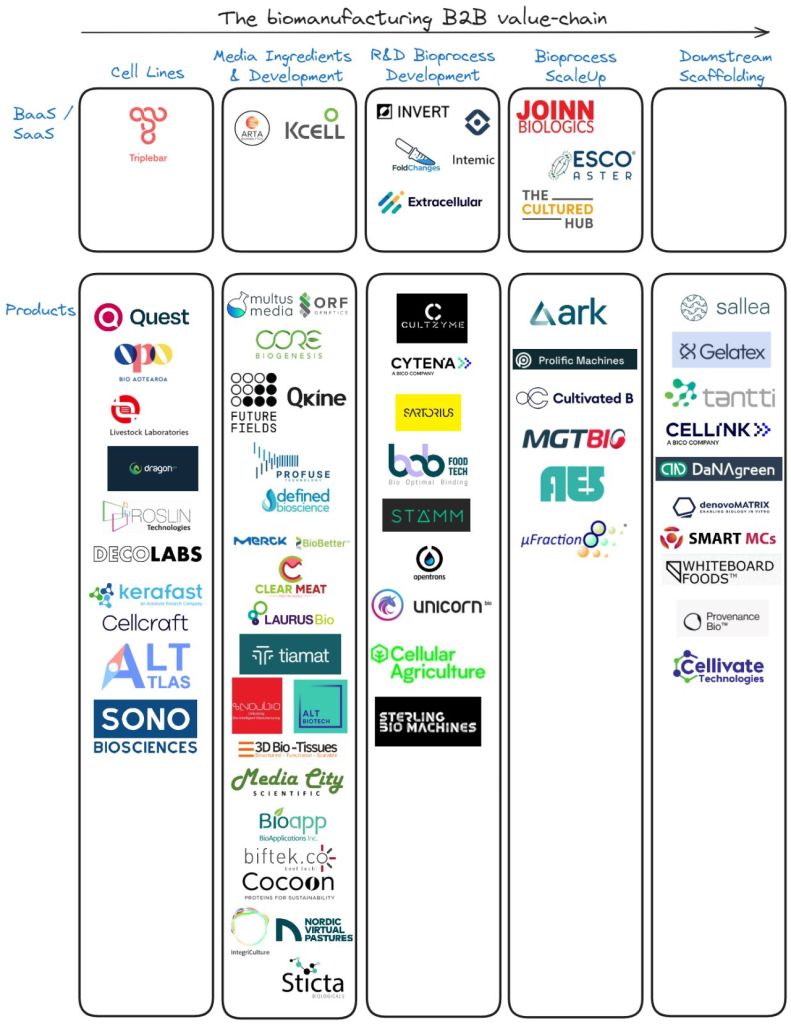A new map of the cultivated meat B2B value chain has been released to help consumer-facing start-ups navigate the ecosystem.
Created by Melbourne-based biotech consultant and former Vow CSO, James Ryall, the chart shows companies in the areas of cell lines, media ingredients & development, R&D bioprocess development, bioprocess scale-up, and downstream scaffolding.
Cellular Agriculture Australia defines cultivated meat — also known as cultured meat or cell cultivation — as a form of cellular agriculture that uses cells and biotechnologies to produce meat, seafood, dairy proteins, and fats.
“It’s incredible to see the innovation and the invaluable support these companies are providing to both the cultured meat space and the broader biomanufacturing community,” Ryall said in a LinkedIn post. “The real opportunity for B2C (business to consumer) cultured meat companies lies in their ability to creatively interlink these various components. The synergy between these elements can significantly amplify the overall value creation in this nascent sector.”

Ryall notes that investors have become reluctant to invest in pre-seed and seed cultivated meat companies, perceiving the sector as already saturated. He said this had led to investors “preferring to wait and see how the existing companies tackle the three big challenges: getting products to market, building consumer demand, and effectively scaling.”

Ryall adds that five years ago, B2C cultivated meat had to build everything from scratch, including cell lines, media, and bioprocesses, with the limited existing infrastructure or components being designed for biopharma, making them prohibitively expensive. However, he says that in 2024, such companies can purchase or license nearly all of the building blocks needed to start producing prototypes.
Ryall says the map he created not only focuses on cultivated meat but shows how the value provided by these companies can be applied to almost any kind of bio-manufactured product.
“Companies that can effectively link these blocks together so that the sum is greater than the parts will likely have a tremendous advantage and could rapidly catch or surpass those that are near market,” he said.
To stay up-to-date on the latest industry headlines, sign up to Future Alternative’s enewsletter.
Posted on:


